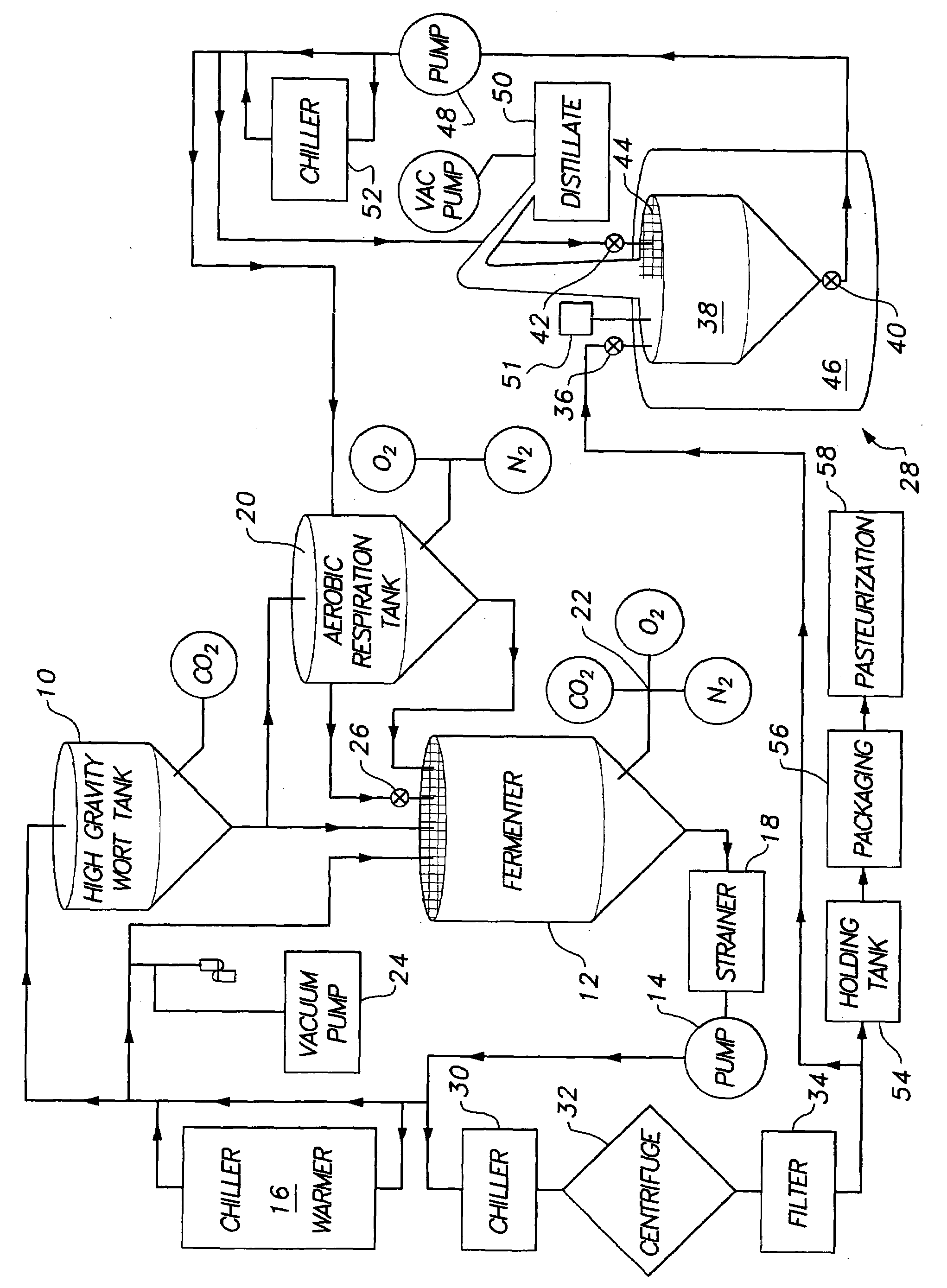Method of making alcohol concentrate
a technology of concentrate and alcohol, applied in the field of alcohol beverages, can solve the problems of high water content by volume of beverages, lack of hop tang, and inability to care for beer, and achieve the effect of efficient extraction of hop resins
- Summary
- Abstract
- Description
- Claims
- Application Information
AI Technical Summary
Benefits of technology
Problems solved by technology
Method used
Image
Examples
Embodiment Construction
[0018]The present invention relates to a method of making an alcohol concentrate. The concentrate may be easily carried by hikers, campers, hunters, and the like, and may be reconstituted to form a potable beverage by hydration with water from streams, lakes, or other natural sources. The method will be illustrated by reference to a process for making beer concentrate. The method is similar for a wine concentrate or a cider concentrate. The process for making wine, for example, is similar to the process for making beer, except that wine is made from fruits that naturally contain sugar, whereas beer comes from grain and requires converting the starch in grains to sugar. As used herein, the term “wort solids” refers to the quantity of fruit (in the case of wine) or grain, malt, and hops (in the case of beer), plus any other flavor additives from which the wort is prepared.
[0019]There are immeasurable variations of ingredients and flavorings that are utilized by the brewing industry. T...
PUM
 Login to View More
Login to View More Abstract
Description
Claims
Application Information
 Login to View More
Login to View More - R&D
- Intellectual Property
- Life Sciences
- Materials
- Tech Scout
- Unparalleled Data Quality
- Higher Quality Content
- 60% Fewer Hallucinations
Browse by: Latest US Patents, China's latest patents, Technical Efficacy Thesaurus, Application Domain, Technology Topic, Popular Technical Reports.
© 2025 PatSnap. All rights reserved.Legal|Privacy policy|Modern Slavery Act Transparency Statement|Sitemap|About US| Contact US: help@patsnap.com


